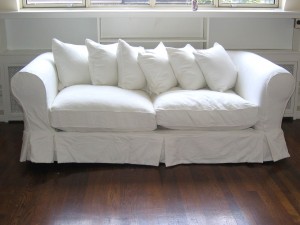San Francisco’s Snowstorms
January 5, 2016 by admin · Leave a Comment
California has a reputation for not handling weather well. Southern California is particularly guilty of this stereotype, but the state as a whole is often caught off guard by severe storms. The most recent example is El Nino, but there is hardly a shortage of examples where the state of California failed to adequately prepare for storms. So it’s refreshing when weather can bring a bit of cheer rather than destruction.
In December of 1856, San Francisco got a dose of holiday cheer in the form of two and a half inches of snowfall. The storm was so thrilling to the citizens that it made the news, along with stories of the town’s oldest resident telling anyone who would listen that he’d never witnessed anything like that in his entire life.
The thermometer hit 36 degrees, and children came out to play with snowballs they’d formed from the fresh powder. Prancing horses marked the wintery celebration, like something out of a commercial, as people sang and danced.
Today, we are concerned with the potential effects of global warming and often ask about the state of our planet. From 1856 to 1888, San Francisco experienced several winter snowstorms and freak rain showers in July. On New Years Eve of 1882, snow fall consistently for five hours straight. The streets were blanketed in 3.5 inches of the white stuff, causing downed wires and freezing the garden at Golden Gate Park.
It was enough to kick off a local debate about whether the changes people had made to the San Francisco landscape had irreparably destroyed the landscape.
About the Author: Samuel Phineas Upham is an investor at a family office/ hedgefund, where he focuses on special situation illiquid investing. Before this position, Phin Upham was working at Morgan Stanley in the Media and Telecom group. You may contact Phin on his Twitter.
What Factors To Consider When Looking at a New Couch
January 5, 2016 by admin · Leave a Comment
 The level of comfort in your favorite couch is largely because of the foam that’s underneath it. The construction of the couch gives it its shape but the foam provides the core of the comfort that you feel. It’s important to differentiate the two when you’re searching for a new couch. There are many factors to consider when looking for the right type of cushion for your couch. Below are some of the primary details that you should pay attention to
The level of comfort in your favorite couch is largely because of the foam that’s underneath it. The construction of the couch gives it its shape but the foam provides the core of the comfort that you feel. It’s important to differentiate the two when you’re searching for a new couch. There are many factors to consider when looking for the right type of cushion for your couch. Below are some of the primary details that you should pay attention to
Density
The better the quality of the foam, the longer it will last. However, you shouldn’t go ahead and find the highest density rating on a cushion. Start with a density value that’s somewhere in the middle and go from there. This way, you’ll have a rough idea on how comfortable you want your sofa or couch foam to be.
Softness and Firmness
An ideal Indentation Load Deflection (ILD) rating that you should start out with should be between 20 to 25. What this value determines is how soft or firm your cushion feels when you sit down on it. The higher the number, the more firm it’s going to be. The lower the number, the easier it will be for the cushion to give way to body weight.
Open Cell or Closed Cell
Polyurethane foam is the most common type of foam that’s used in couches or sofas. They’re comprised of either open or closed cells and offer varied levels of comfort. When you’re considering replacement cushions, it’s important to know what type of cell structure is included inside.
Bio: The Foam Factory is a distributer of a wide range of open and closed cell foam materials. If your couch cushions need an upgrade, visit The Foam Factory today.
